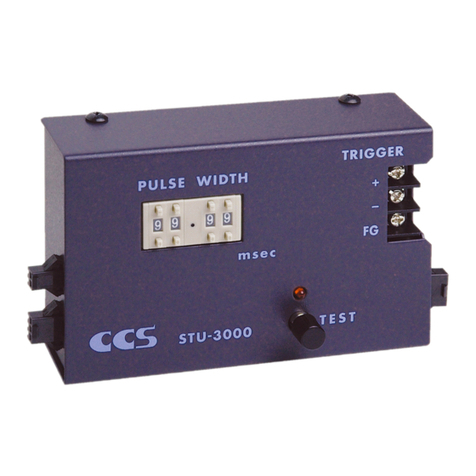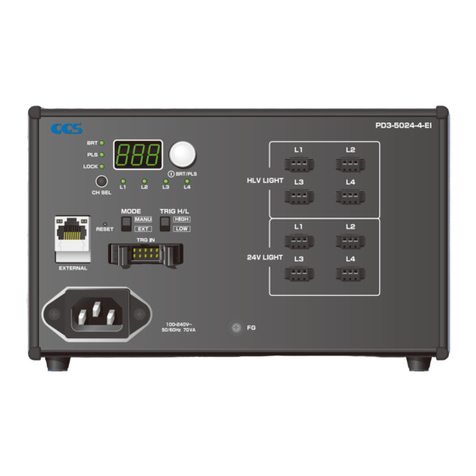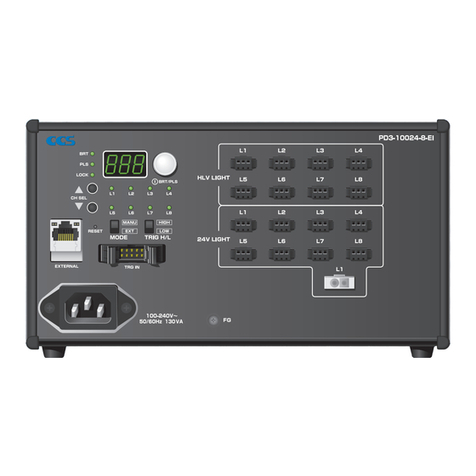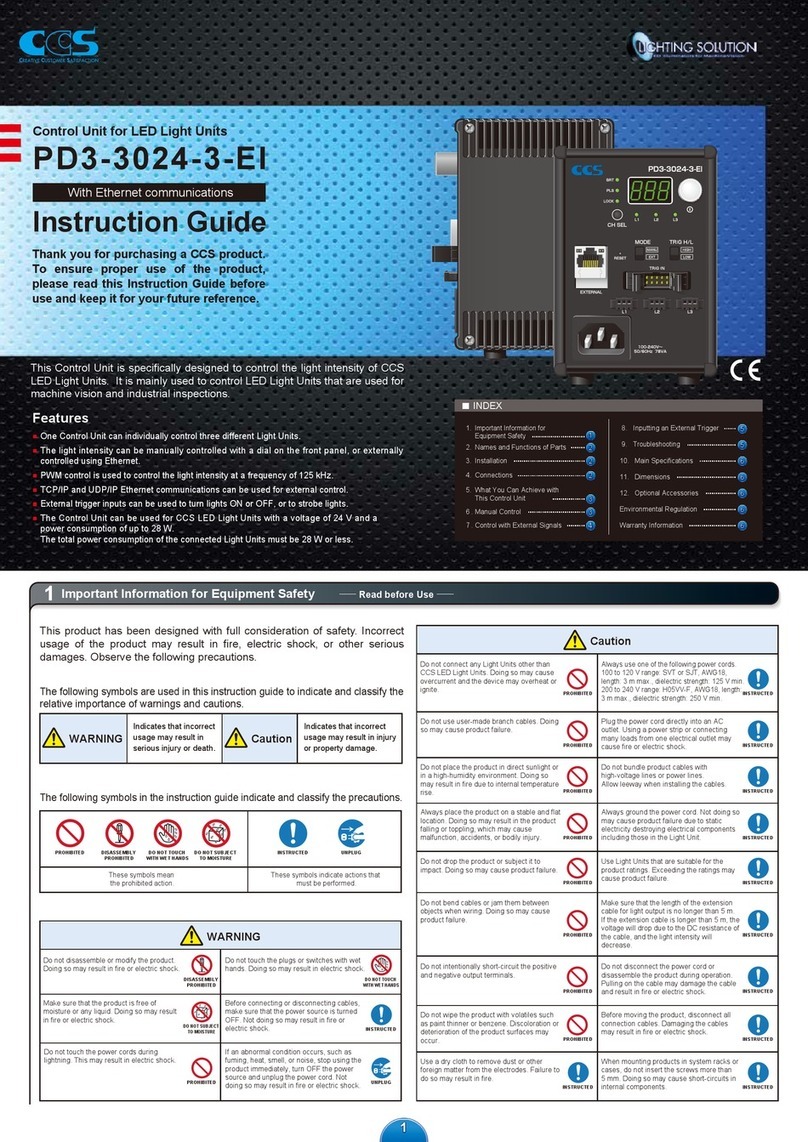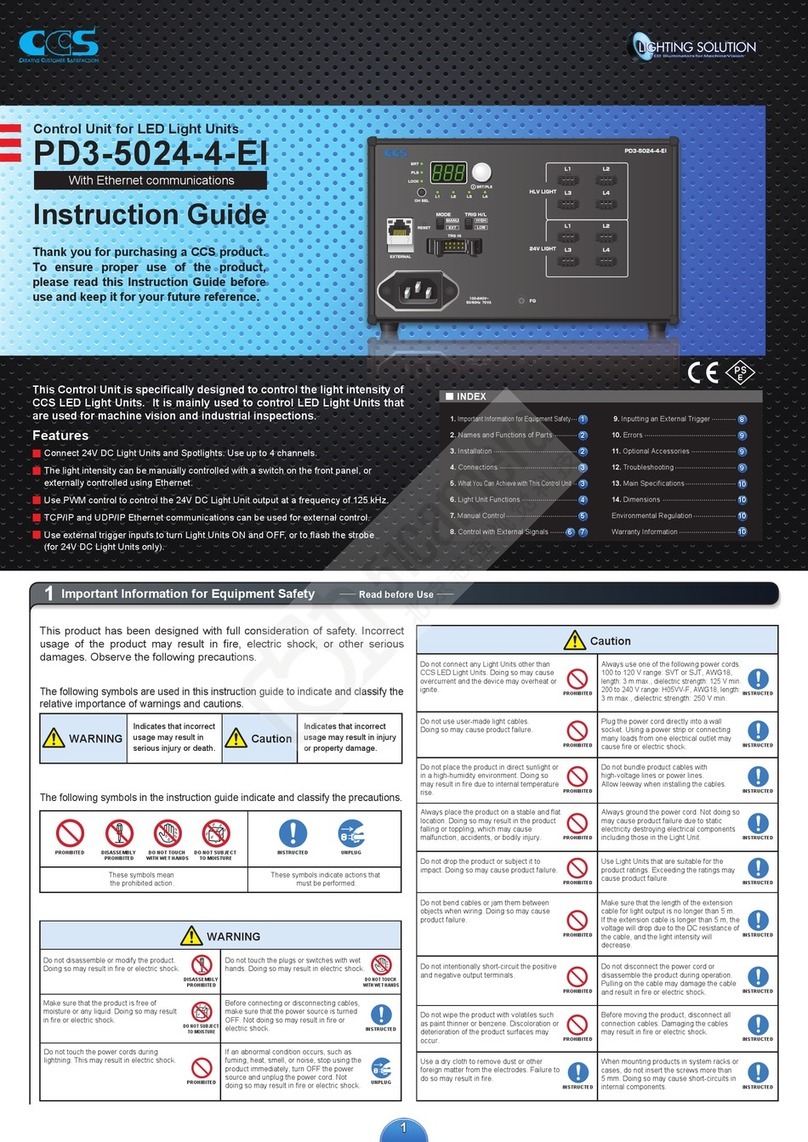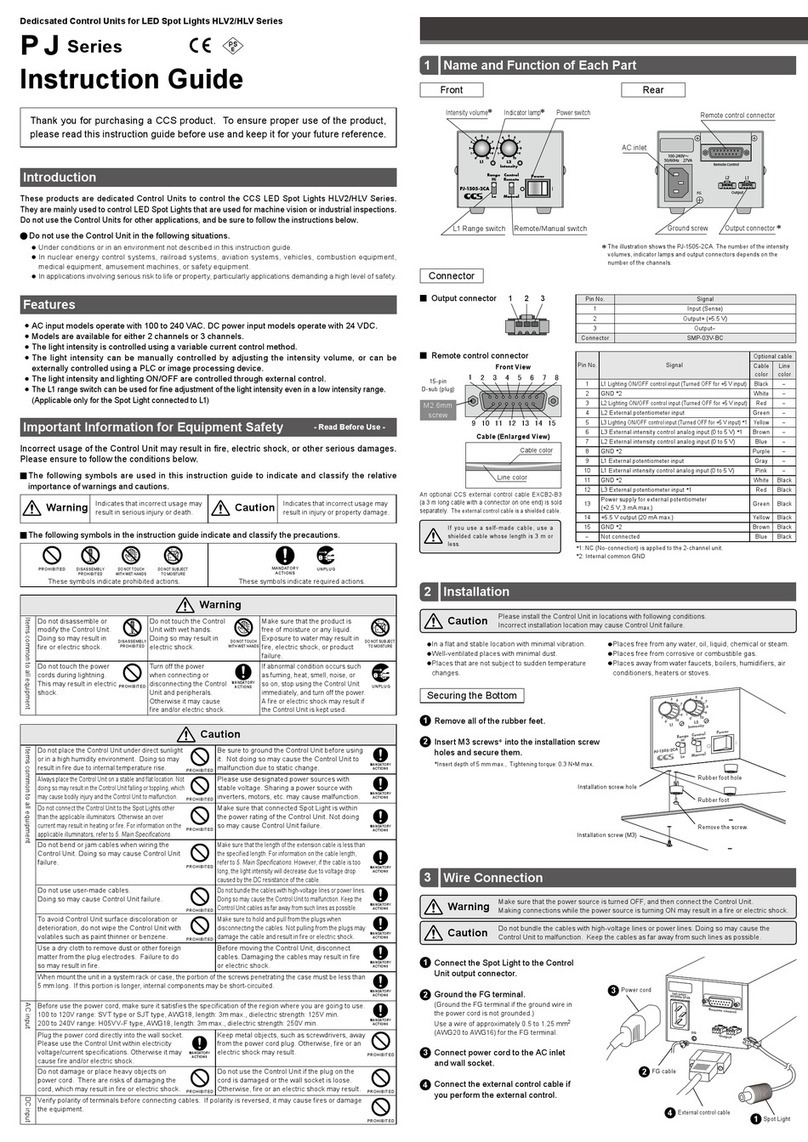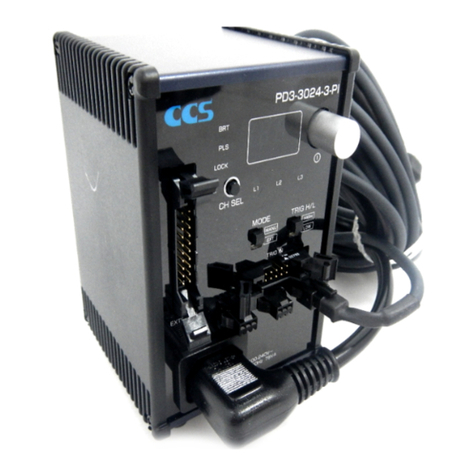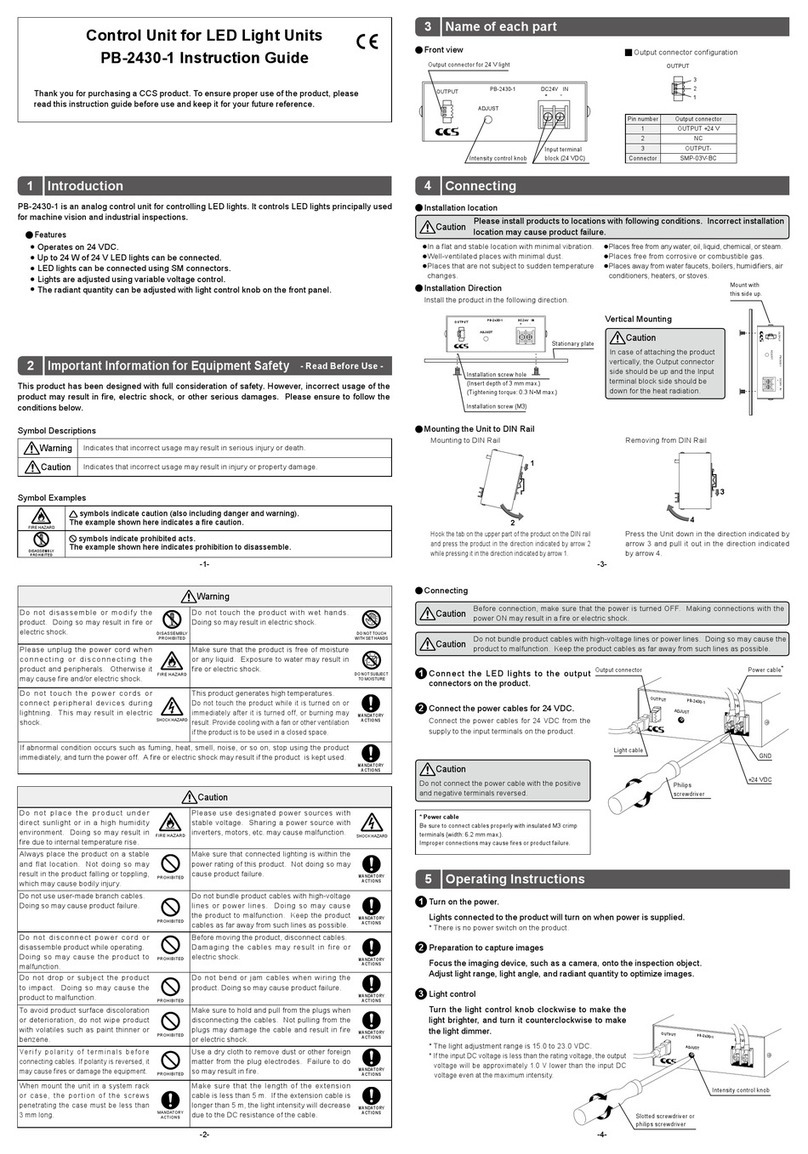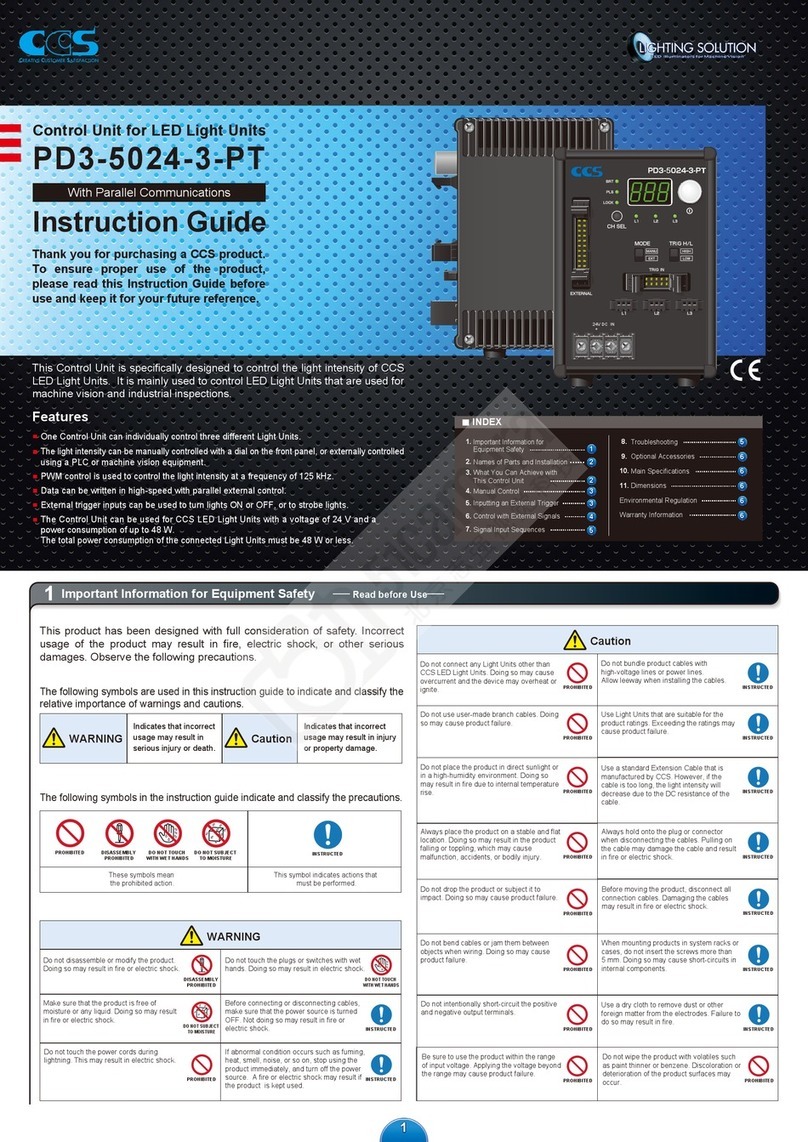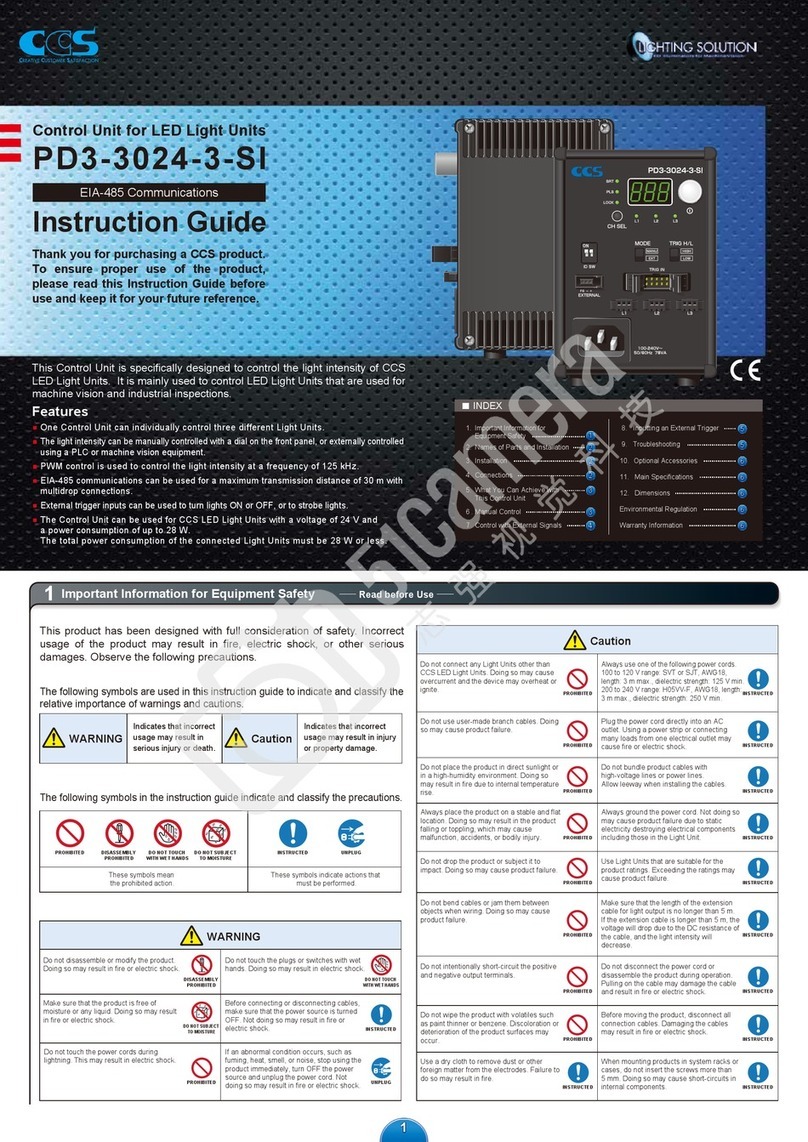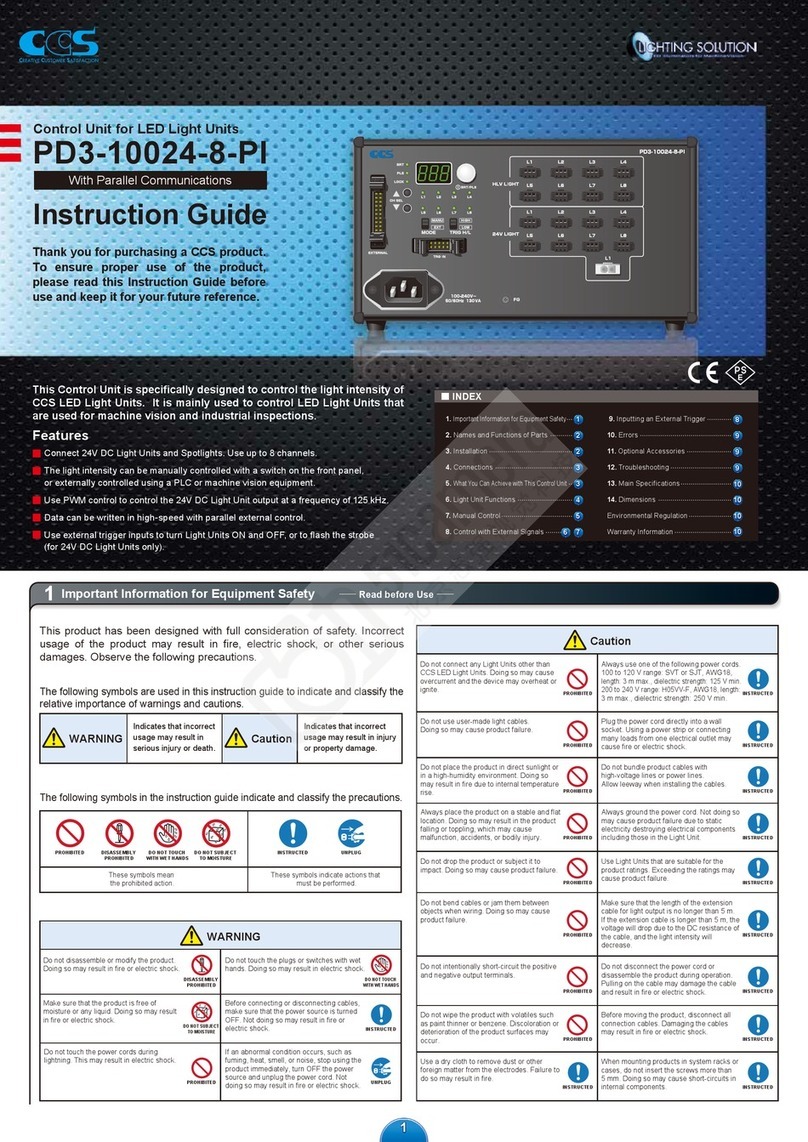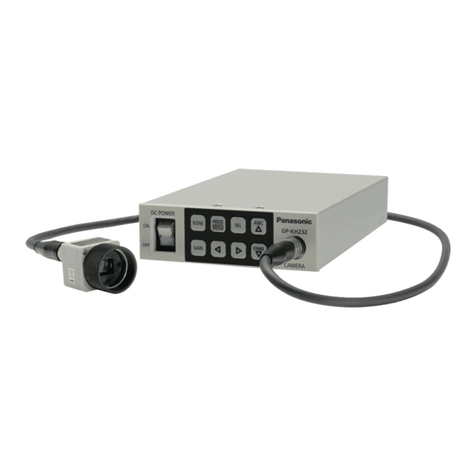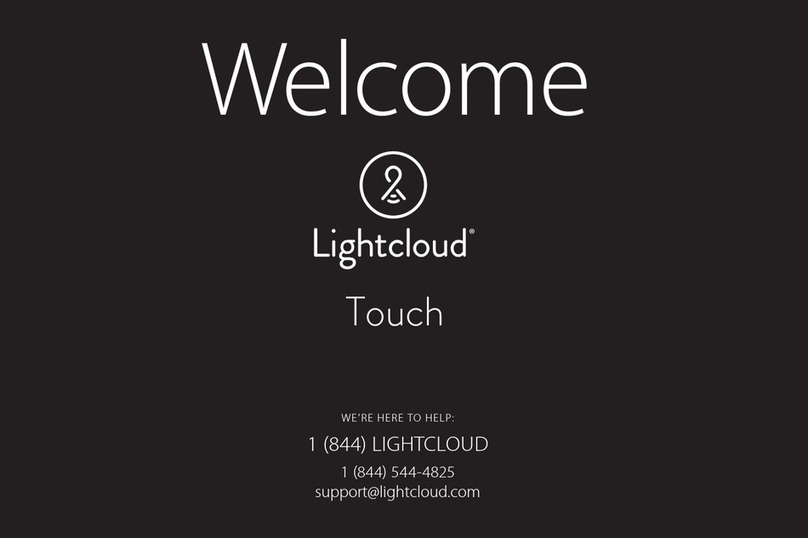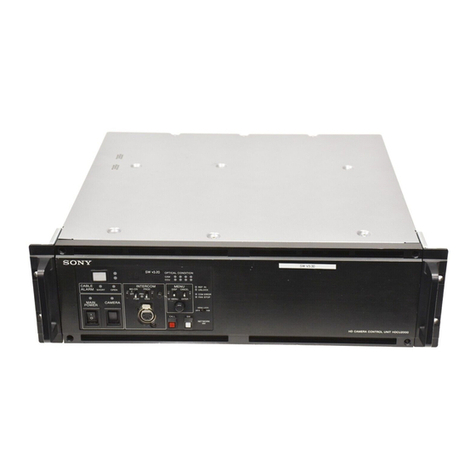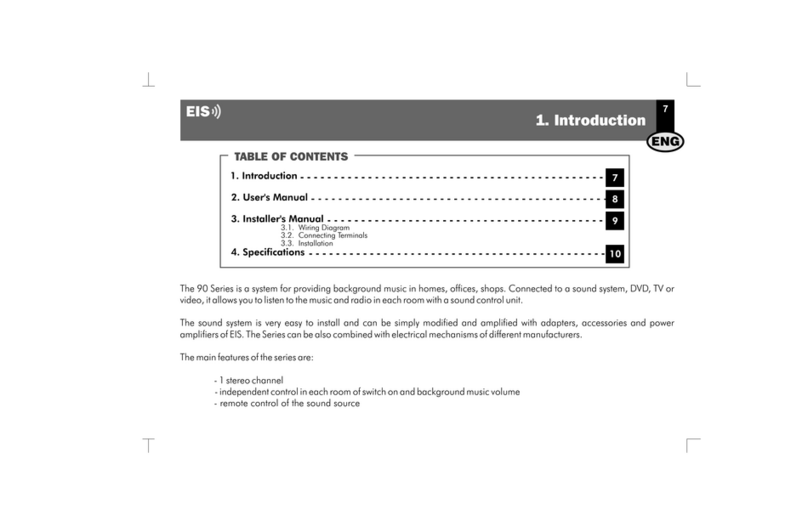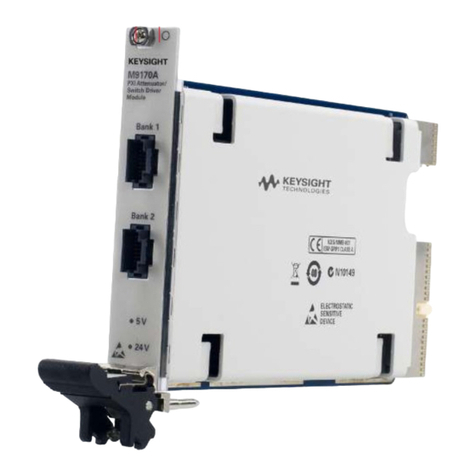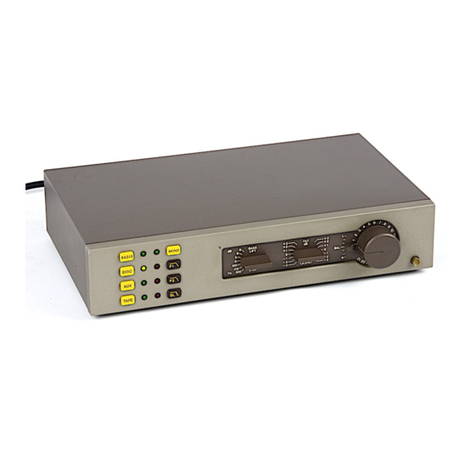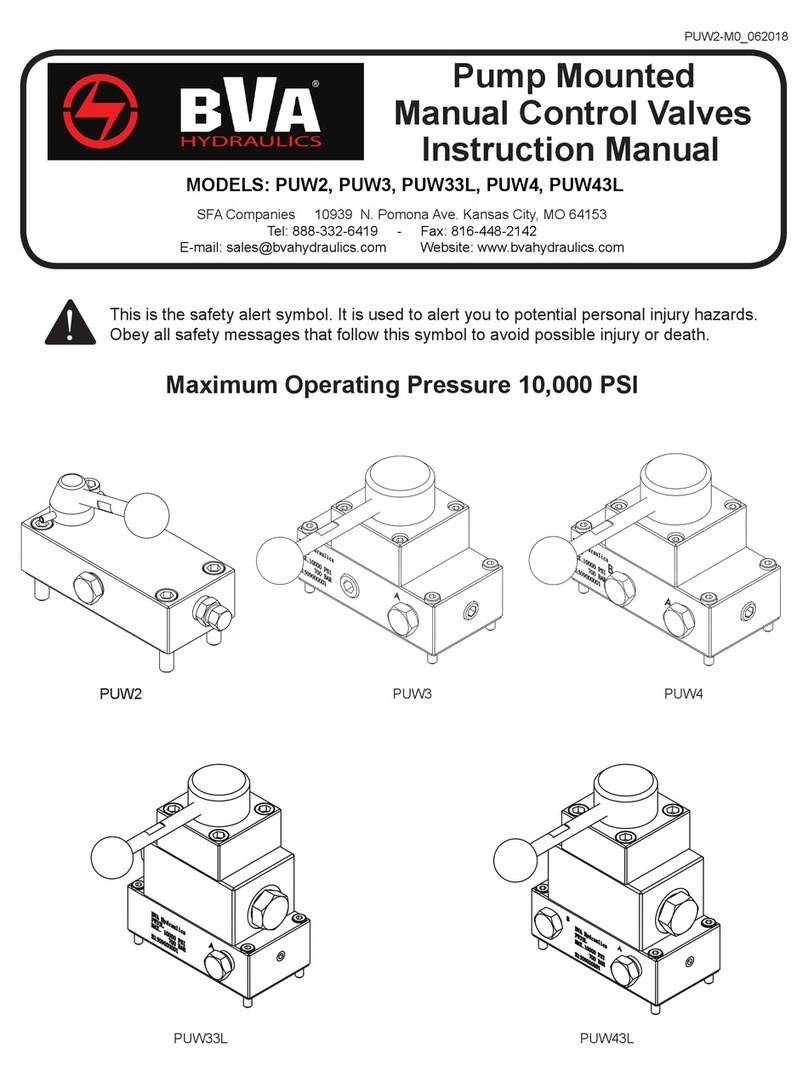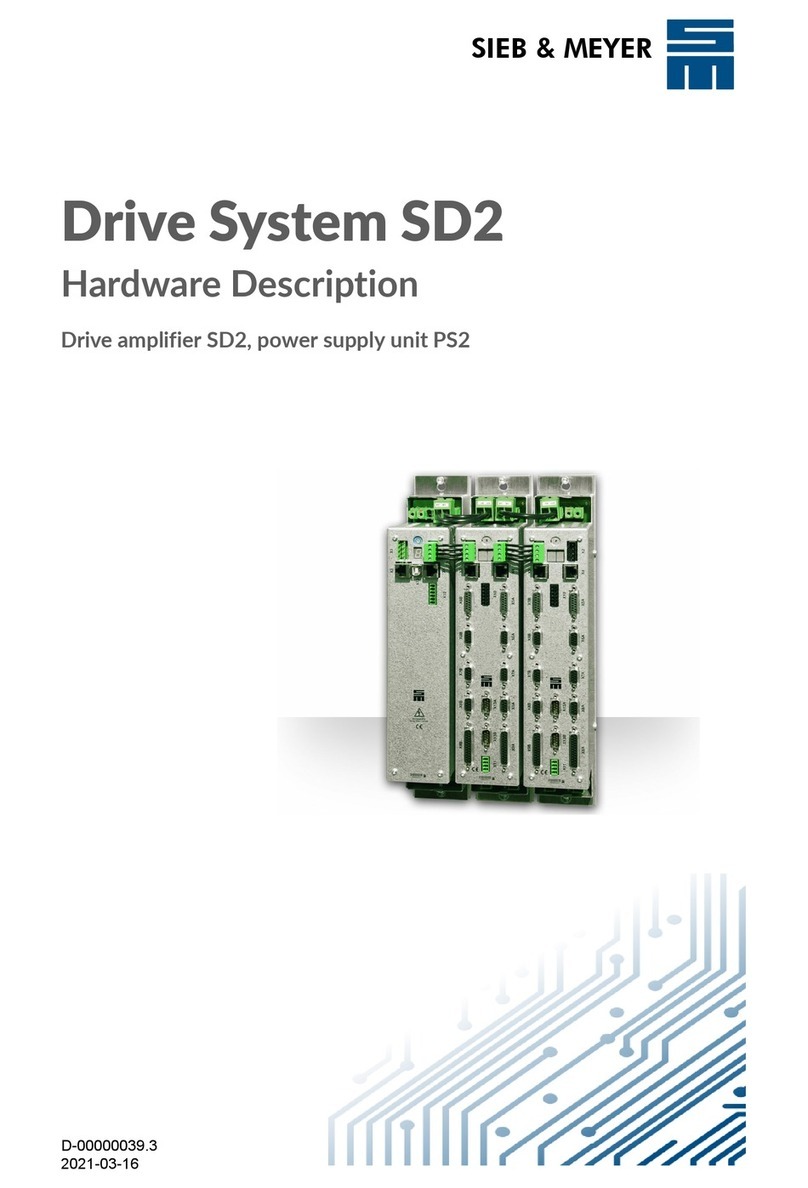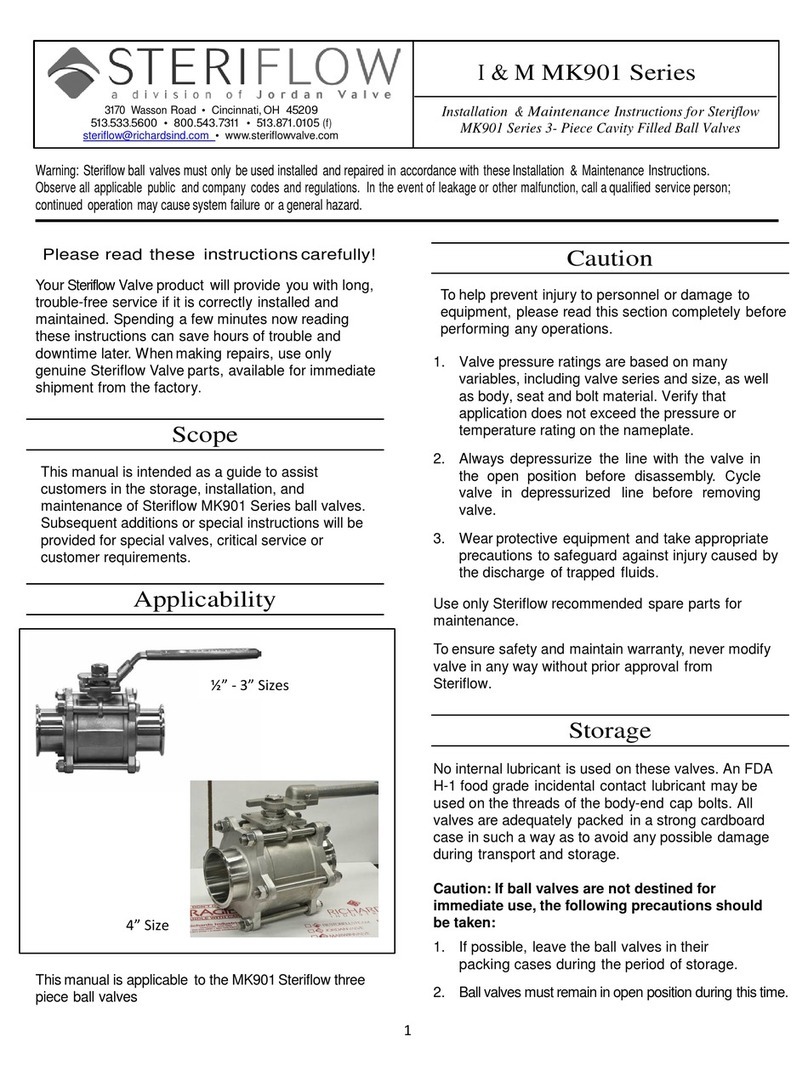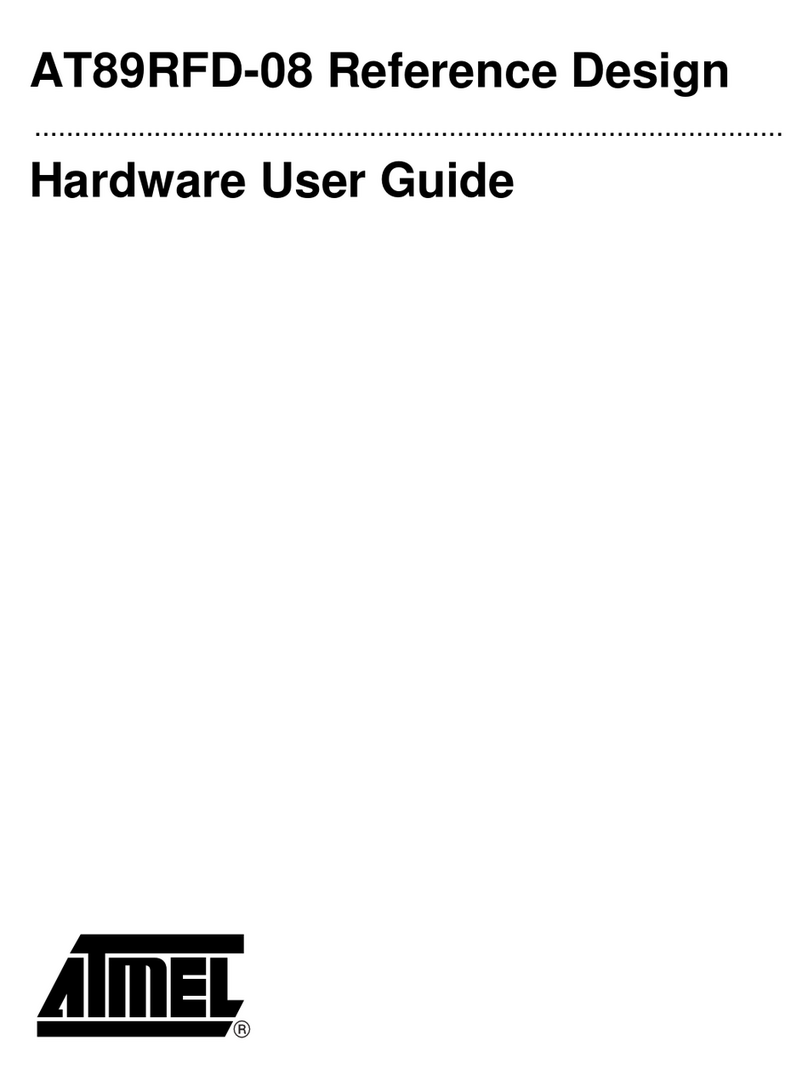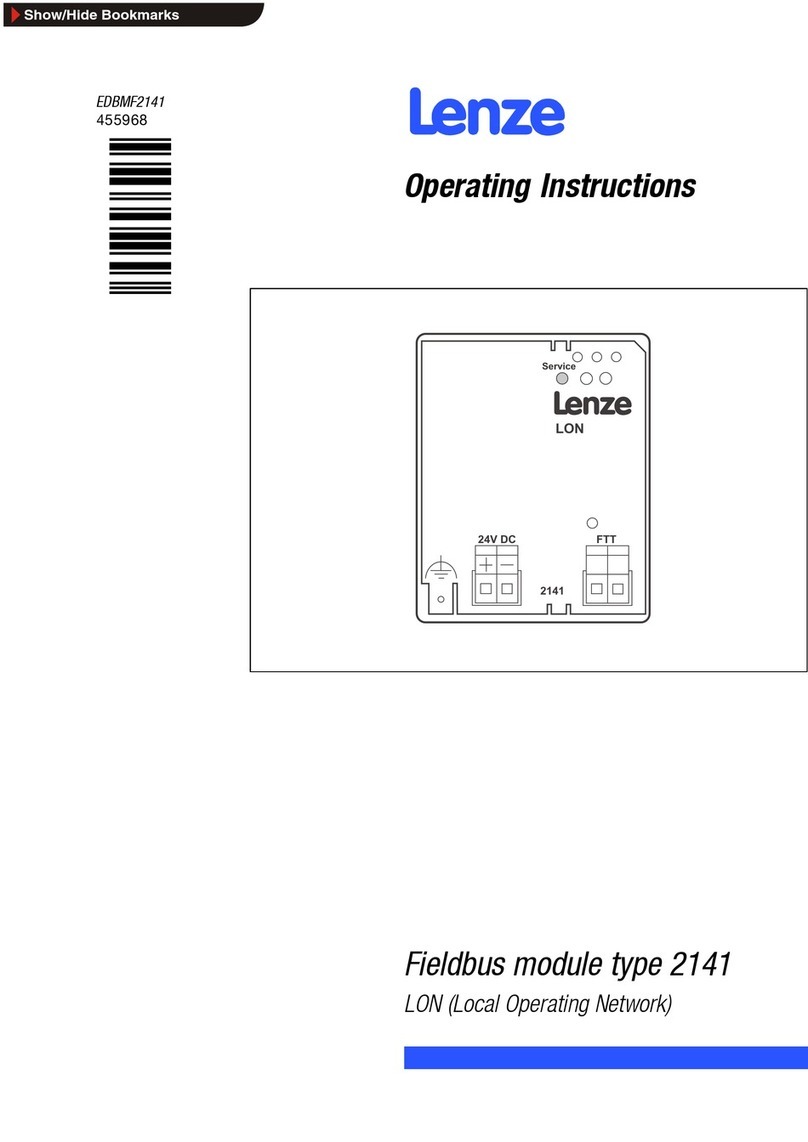CCS PD3-5024-4-SI Manual

1
PD3-5024-4-SI
Control Unit for LED Light Units
EIA-485 Communications
Thank you for purchasing a CCS product.
To ensure proper use of the product,
please read this Instruction Guide before
use and keep it for your future reference.
Instruction Guide
8
9
9
9
10
10
10
10
1
2
2
3
3
4
5
6
INDEX
1.
Important Information for Equipment Safety
2. Names and Functions of Parts
3. Installation
4. Connections
5.
What You Can Achieve with This Control Unit
6. Light Unit Functions
7. Manual Control
8. Control with External Signals
9. Inputting an External Trigger
10. Errors
11. Optional Accessories
12. Troubleshooting
13. Main Specifications
14. Dimensions
Environmental Regulation
Warranty Information
7
Features
This Control Unit is specifically designed to control the light intensity of
CCS LED Light Units. It is mainly used to control LED Light Units that
are used for machine vision and industrial inspections.
Connect 24V DC Light Units and Spotlights. Use up to 4 channels.
The light intensity can be manually controlled with a switch on the front panel,
or externally controlled using a PLC or machine vision equipment.
Use PWM control to control the 24V DC Light Unit output at a frequency of 125 kHz.
EIA-485 communications can be used for a maximum transmission distance of 30 m with multidrop connections.
Use external trigger inputs to turn Light Units ON and OFF, or to flash the strobe
(for 24V DC Light Units only).
Caution
INSTRUCTED
PROHIBITED
INSTRUCTED
PROHIBITED
INSTRUCTED
PROHIBITED
INSTRUCTED
PROHIBITED
INSTRUCTED
PROHIBITED
INSTRUCTED
PROHIBITED
INSTRUCTED
PROHIBITED
INSTRUCTED
INSTRUCTED
INSTRUCTED
PROHIBITED
The following symbols are used in this instruction guide to indicate and classify the
relative importance of warnings and cautions.
The following symbols in the instruction guide indicate and classify the precautions.
WARNING
WARNING
Indicates that incorrect
usage may result in
serious injury or death. Caution
Indicates that incorrect
usage may result in injury
or property damage.
PROHIBITED
PROHIBITED
DISASSEMBLY
PROHIBITED
DISASSEMBLY
PROHIBITED
DO NOT TOUCH
WITH WET HANDS
DO NOT TOUCH
WITH WET HANDS
These symbols mean
the prohibited action.
These symbols indicate actions that
must be performed.
DO NOT SUBJECT
TO MOISTURE
DO NOT SUBJECT
TO MOISTURE
INSTRUCTED
INSTRUCTED
UNPLUG
UNPLUG
This product has been designed with full consideration of safety. Incorrect
usage of the product may result in fire, electric shock, or other serious
damages. Observe the following precautions.
Do not touch the power cords during
lightning. This may result in electric shock.
Do not disassemble or modify the product.
Doing so may result in fire or electric shock.
Do not touch the plugs or switches with wet
hands. Doing so may result in electric shock.
Make sure that the product is free of
moisture or any liquid. Doing so may result
in fire or electric shock.
Before connecting or disconnecting cables,
make sure that the power source is turned
OFF. Not doing so may result in fire or
electric shock.
If an abnormal condition occurs, such as
fuming, heat, smell, or noise, stop using the
product immediately, turn OFF the power
source and unplug the power cord. Not
doing so may result in fire or electric shock.
Do not use user-made light cables.
Doing so may cause product failure.
Do not place the product in direct sunlight or
in a high-humidity environment. Doing so
may result in fire due to internal temperature
rise.
Always place the product on a stable and flat
location. Doing so may result in the product
falling or toppling, which may cause
malfunction, accidents, or bodily injury.
Do not intentionally short-circuit the positive
and negative output terminals.
Do not bend cables or jam them between
objects when wiring. Doing so may cause
product failure.
Do not wipe the product with volatiles such
as paint thinner or benzene. Discoloration or
deterioration of the product surfaces may
occur.
Do not drop the product or subject it to
impact. Doing so may cause product failure.
Use a dry cloth to remove dust or other
foreign matter from the electrodes. Failure to
do so may result in fire.
Do not connect any Light Units other than
CCS LED Light Units. Doing so may cause
overcurrent and the device may overheat or
ignite.
Plug the power cord directly into a wall
socket. Using a power strip or connecting
many loads from one electrical outlet may
cause fire or electric shock.
Do not bundle product cables with
high-voltage lines or power lines.
Allow leeway when installing the cables.
Always ground the power cord. Not doing so
may cause product failure due to static
electricity destroying electrical components
including those in the Light Unit.
Use Light Units that are suitable for the
product ratings. Exceeding the ratings may
cause product failure.
Make sure that the length of the extension
cable for light output is no longer than 5 m.
If the extension cable is longer than 5 m, the
voltage will drop due to the DC resistance of
the cable, and the light intensity will
decrease.
Do not disconnect the power cord or
disassemble the product during operation.
Pulling on the cable may damage the cable
and result in fire or electric shock.
Before moving the product, disconnect all
connection cables. Damaging the cables
may result in fire or electric shock.
When mounting products in system racks or
cases, do not insert the screws more than
5 mm. Doing so may cause short-circuits in
internal components.
1Important Information for Equipment Safety Read before Use
Always use one of the following power cords.
100 to 120 V range: SVT or SJT, AWG18,
length: 3 m max., dielectric strength: 125 V min.
200 to 240 V range: H05VV-F, AWG18, length:
3 m max., dielectric strength: 250 V min.

22
2Names and Functions of Parts
Channel Selection Switch
For external control with EIA-485 communications.
External Control Connector
External Trigger Input Connector
FG terminal
Output Connectors
(24V LIGHT)
Fan Air Inlet (Left side)
Fan Exhaust Outlet (Right side)
Output Connectors
(HLV LIGHT)
Setting Indicators
Channel Indicators
Press: Switches between the light intensity setting and lighting mode setting.
Press for at least 2 seconds: Locks the settings.
Rotate: Sets the light intensity or lighting mode.
Setting Switch
Displays the setting of the
light intensity or the setting of
the lighting mode.
Digital Window
Selects manual (MANU) or external (EXT) control mode.
Manual/External Mode Selector
Selects the logic of the trigger signal.
Trigger Logic Switch
Connects the power source to the Control Unit.
AC Inlet
BRT lit: The light intensity can be set.
PLS lit: The lighting mode can be set.
LOCK lit: The settings are locked.
Inputs the ON/OFF signal for ON/OFF Mode.
Inputs the trigger signal for Strobe Mode.
Sets the ID for recognition with EIA-485 communications.
ID Switch
Select the channel from L1 to L4. Only the channel
on which Light Units are connected can be selected.
The channels with same channel No. of 24V LIGHT
and HLV LIGHT are operated simultaneously.
Ground the FG terminal.
Connect these connectors to the 24V DC Light Units.
(L1 to L4)
This is the air inlet for the cooling fan.
This is the air outlet for the cooling fan.
Connect these connectors to the Spotlights.
(L to L4)
The indicator for the selected channel will light.
When the L1 indicator is lit, the settings for the L1 Light
Unit in the 24V Light Units (24V LIGHT) and the L1 Light
Unit in the Spotlights (HLV LIGHT) can be changed.
Rear DIN rail bracket x 1
Screws x 4
3Installation
Do not place any objects within 20mm from the fan air inlets
or fan exhaust outlets. Insufficient ventilation may cause
heat to accumulate inside the product and result in a fire.
Mounting the Unit to DIN Rail
Mounting to DIN Rail
Hook the tab on the upper part of the Unit on the DIN rail and press the
Unit in the direction indicated by arrow 2 while pressing it in the direction
indicated by arrow 1.
Removing from DIN Rail
Press the Unit down in the direction indicated by arrow 3 and pull it out in
the direction indicated by arrow 4.
DIN Rail
1
2
DIN Rail
3
4
WARNING
Mounting Removing
1Removing the Rubber Feet from the Bottom of the Unit
Remove the screws that hold the rubber feet in place using a Phillips
screwdriver.
2Securing the Brackets to the Base of the Unit
Secure the Brackets to the base of the Unit with the four screws that
come with the Brackets.
3Securing the Unit with Mounting Screws
Secure the Unit in place with mounting screws. The mounting screws must
be provided by the user.
Securing the Unit with Base Brackets (Accessories)
* Attach the Bracket to the other side as well.
70
Two, 3.5 dia.
holes
±0.2
±0.2
59.3
29
4-C2
40
Two, 4.5 dia.
holes
195
(1)
5
10
Model: BK-PD3
Base Brackets
Rubber foot
Installation screw holes
(Insert the screws to a depth of no more than 5 mm
and use a tightening torque of 0.3 N·m max.)
M3 screws for the rubber feet
Screws for securing the Brackets to the mounting surface
(Prepare the mounting screws yourself according to the installation conditions.)
M3 screws for mounting the Brackets (M3, included with the Brackets)
Holes for the mounting screws (4.5 dia.)
Includes two Base Brackets and
four mounting screws (+ one spare screw)
Do not remove the DIN rail bracket.
If
they must be removed and attached
again, make sure that you use the original
screws (or M3 × 4 mm screws).
If other screws are used, they may
short-circuit internal components and
electric shock may occur.
Caution
Always use Base Brackets (model: BK-PD3) when securing the Unit at
its base. If it is secured without the Brackets, the Unit may be damaged.
Caution

33
External Trigger Input Cable
(EXCB2-M10-3)
External Trigger Input Cable
(EXCB2-M10-3)
External Control Cable
(EXCB2-E3-3)
External Trigger Input Cable
(EXCB2-M10-3)
External Control Cable
(EXCB2-E3-3)
External Trigger Input Cable
(EXCB2-M10-3)
External Control Cable
(EXCB2-E3-3)
2
1
Press the connector in until it locks in place.
Release the lock and remove the connector.
4Connections
1Connect the LED Light
Connect the connecting cable to the LED Light Unit to the output connector on the Control Unit.
3
Connect the External Control Cable (Optional item, sold separately)
An Optional External Control Cable (EXCB2-E3-3) (sold separately) is available.
In case using a self-made cable, cable length should be within 30 m at maximum.
4
Connect the External Trigger Input Cable (Optional item, sold separately)
An optional External Trigger Input Cable (EXCB2-M10-3) (sold separately) is available.
In case using a self-made cable, cable length should be within 3 m at maximum.
Press the connector in until it locks in place.
Release the lock and remove the connector.
Before connecting the Control Unit, make sure that the main
power source is turned OFF. Making connections with the
power turned ON may result in a fire or electric shock.
WARNING
Connecting Removing
Connecting Removing
To perform external control, connect the external control cable to the external control connector.
1
2
1
2Connect the AC Cord
The AC cord that is included with the Unit is for 100 to 120V AC. We recommend using the
following for 200 to 240V AC. Cable: GTCE-3 x 1.0 mm
2
(manufactured by Kawasaki Electric
Wire Company), Connector: KS-31AY (manufactured by Kawasaki Electric Wire Company)
Connect the power cord to the Control Unit and a wall socket. The Control Unit will turn ON when
power is supplied from the main power source. When the Unit is ON, the digital window will light.
Digital Window
The light intensity of the
lowest channel is displayed.
(Display when no Light
Unit is connected)
Connect the AC power cord to the AC inlet and a wall socket.
*Data that has been
set is retained even
after the power is
turned OFF with
manual or external
control.
To use ON/OFF Mode or Strobe Mode, connect the external trigger input
cable to the external trigger input connector.
Insert the connector to the Light Unit all the way in.
Press the lock and pull out the connector.
1
2
Connecting Removing
Connect 24V DC Light Units to the 24V LIGHT output connectors, and Spotlights to
the HLV LIGHT output connectors.
Select the control mode and lighting mode from the following Application Guide and proceed to the indicated reference items.
The Light Units are always ON.
Power ON
Power OFF
Lit.Not lit.
Control Mode
Lighting Mode
Application Guide
To use external control in Strobe Mode,
refer to items , and under
and
.
9Inputting the External Trigger
1 32
8Control with External Signals
To use external control in Continuous Mode,
refer to items and under
.
1 2
8Control with External Signals
To use manual control in ON/OFF Mode,
refer to items , , and under
and
.
Inputting the External Trigger
9
7Manual Control
13
2
To use manual control in Continuous Mode, refer to
items , , and under .
7Manual Control
1 32
To use manual control in Strobe Mode,
refer to items , , and under
and
.
9Inputting the External Trigger
7Manual Control
1 3 42
The Light Units are turned ON for
a set time after the external trigger
signal is input.
Photocoupler OFF
Photocoupler ON
Lit. Not lit.Not lit.
* When the Trigger Logic
Switch is set to HIGH
Continuous ModeON/OFF Mode
Strobe Mode
Front panel operation External control using a PLC
or image process device
The Light Units are turned ON or
OFF according to the external
trigger signal input.
Photocoupler OFF
Photocoupler ON
Lit. Not lit.Not lit.
* When the Trigger Logic
Switch is set to HIGH
5What You Can Achieve with This Control Unit
* It is possible to turn LED light unit ON and
OFF by EIA-485 communications, too.
External trigger signal or EIA-485
communications setting can be selected when
using ON/OFF mode by external control.
To use external trigger signal in ON/OFF mode,
refer to items , and under
8Control with External Signals
9Inputting the External Trigger
1 2
and
.
To use EIA-485 communications setting in ON/OFF mode,
refer to items , , and under
1 2
8
Control with External Signals
4
.
(Only 24V DC Light Units can be set.) (Only 24V DC Light Units can be set.)

44
6
SMP-03V-BC×4
SMP-03V-BC×4
* Rated capacity per connector: 3.9 W max.
(700mA max.)
Total for all connectors×8
* Total rated capacity: 46 W max.
PWM control or lighting time control
46W max.
Depends on the power consumption of the Light Units.
Depends on which Light Units are connected/disconnected.
Detected when connected for the first time.
0.5 s
Item
Applicable illuminators
Lighting method
Lighting
mode
Control
mode
Rated capacity
Lighting delay time
Channel selection
Light Unit connection detection
Power startup time
Continuous mode
ON/OFF mode
Strobe mode
Manual control
External control
Variable current control
---
Per connector: 3.9 W max. (700mA max.)
Depends on the light intensity of the Light Unit.
Only connected Light Units can be selected.
Detected at any time.
3 s
10
5, 6
5, 6
5, 6
5
6, 7
10
8
5
5
10
10
Spotlights
24V DC Light Units
Spotlights: HLV2 series, HLV series*
*not including HLV-27 series/HLV-14- R/
HLV-14- GR/HLV-14- BL /HLV-14 -SW
Reference
page
Light Unit Functions
This Control Unit can be connected to Light Units and Spotlights with 24V DC inputs. Connect 24V DC Light Units to the 24V LIGHT connectors and
Spotlights to HLV LIGHT connectors. The functions vary with the Light Units that are connected. Check the following table before using the Light Units.
Output Connectors (24V LIGHT)
Output Connectors (HLV LIGHT)
Light Units with 24V DC input voltage

55
4Selecting the Lighting Mode
3Setting the light Intensity
7Manual Control
Make sure that the main power source is turned ON.
Set items , , and when using Continuous Mode or ON/OFF Mode.
Set items , , , and when using Strobe Mode.
1 3 42
1 32
Make sure that the LOCK setting indicator is
not light and that the trigger logic switch is set
to HIGH. Otherwise you may not be able to
perform the rest of this procedure.
Set the Manual/External Mode Selector to MANU to
set Manual Mode.
1Setting the Manual/External Mode Selector to Manual
Check
Four channels from L1 to L4 are
allocated to the 24V LIGHT and HLV
LIGHT output connectors. When L1 is
selected, settings for the L1 Light Unit
for the 24V LIGHT connectors and the
HLV LIGHT connectors can be
changed. The 4 channels can be
controlled separately.
2Selecting the Channel
Press the channel selection switch to select the channel to set (L1 to L4).
Only channels with Light Units connected to them can be selected.
(If a new Light Unit is connected, the lowest channel is automatically selected.)
Press.
Press the setting switch to light the PLS setting indicator.
Turn the setting switch to select the lighting mode from Continuous Mode,
ON/OFF Mode, or Strobe Mode. (Default value: F00 )
Press the setting switch to light the BRT setting indicator.
Turn the setting switch to set a value between 0 and 255.
(Default setting: 255 , Minimum: 000 , Maximum: 255 )
Press.
Press.
* The light intensities are theoretical values.
24V LIGHT
0.4 (Dimly lit)
0.8
1.2
99.6
100.0
…
Light intensity (%)
HLV LIGHT
0.0 (Not lit)
0.4
0.8
99.6
100.0
…
…
000
002
254
255
001
Digital Window
Locking Settings
When the setting switch is pressed for 2
seconds or longer, the lighting mode and
light intensity settings are locked, and the
LOCK setting indicator lights. (The set values
can be viewed.) Pressing the switch again for
2 seconds or longer releases the lock.
4Selecting the Lighting Mode (Continued)
Turn the setting switch and set
F00
to turn ON the Light Units continuously.
To flash the strobe, turn the setting switch and select a setting from F01 to
F10 (strobe time of 40 μs to 40 ms). The Light Units are turned ON for the
period of time set on the setting switch after the external trigger signal is input.
The Strobe Mode can be set for 24V DC Light Units only.
Turn the setting switch and set F00 to turn the Light Units ON and OFF.
The Light Units are turned ON or OFF according to the external trigger signal input.
40μs
80μs
120μs
200μs
600μs
Strobe Mode
(The Strobe Mode can be set
for 24V DC Light Units only.) 1ms
4ms
10ms
20ms
40ms
Continuous Mode / ON/OFF Mode
Status
Digital Window
F01
F02
F03
F04
F05
F06
F07
F08
F09
F10
F00
Press for 2 s.
Continuous Mode
ON/OFF Mode (If the external trigger is not used, the Light Units are ON continuously.)
Strobe Mode (If an external trigger is not used, the Light Units are OFF.)
For details on the external trigger input, refer to 9. Inputting the External Trigger.
Precautions for Channel Selection
Only channels with Light Units connected to them can be selected. If a Light Unit is removed
without turning OFF the power supply, the channel for the Light Unit that is no longer connected
may be selected. This does not indicate a malfunction. Check the following table for details.
There is risk of fire or electric shock. Make sure that the power supply is turned OFF when
you connect Light Units or Spotlights.
The channel with the
disconnected Light Unit
can be selected.
The Light Unit was disconnected
without turning OFF the power supply.
The channel with the
disconnected Light Unit
cannot be selected.
Operation
If there is an electrical connection,
the Light Unit will light.
(The channel can be selected.)
The Light Unit does not turn
ON or an HLV ID error occurs.
(The channel cannot be selected.)
A Light Unit that is not
supported was connected.
Connector Connection Example
L2 and L4
Channels
can be selected for the
and
: L4
: L2 .
can be selected if the connections
without turning OFF the power supply.
L1, L2 and L3
Channels
and
: L3
: L1 .
are changed to the following:
following connections:
Even if the Light Unit is disconnected,
the channel can be selected until
the power is turned OFF.
(The settings are also retained.)

8Control with External Signals
Specifications for External Control
Communications Specifications
Communications protocol Baud rate Data bit length Parity bit Stop bits
EIA-485 compliant 19,200 bps 8 bits None 1 bit
Connector Layout
External Control Connector Plug
3 2 1 No. Signal Cable (ECXCB2-E3-3)
Enlarged Cable Diagram
Wire color Line color
1 I/O+
2I/O−
FG
Black
Black
Drain wire
None
White
3 (shield)
Line color Wire color
Drain wire
ABCDEFGHIJKLMNOPQRSTUVWXYZ 0123456789
Sample of Alphanumeric Characters:
Command Formats
Send Data (*1)
Light Intensity Setting
Lighting Mode Setting
ON/OFF Setting
Setting Status Check
Error status check
All Channel Initialization
Function
@
Header
<CR><LF>
Delimiter
F
S
L
M
C
R
Instruction
Sent command
00 to 03
(Refer to *7)
ID specification
00 to FF
(Refer to *8)
Checksum
000
00
(Refer to *9)
- - -
- - -
- - -
Default
000 to 255 (Refer to *4)
00 to 10 (Refer to *5)
0: Not lit, 1: Lit (Refer to *6)
- - -
- - -
- - -
Data (*2)
Channel specification
00 (fixed)
00 to 03
(Refer to *3)
FF: All channels
(ON/OFF setting only).
Receive Data (*10)
<CR><LF>
Delimiter
00 to 03
(Refer to *7)
ID specification
00 to FF
(Refer to *8)
Checksum
Received command
OK
O
- - -
- - -
F999.S99.L9 (Refer to *11)
00: Normal, 11: Error
NG
N
01: Command error
03: Set value out
of range error
02: Checksum error
Light Intensity Setting
Lighting Mode Setting
ON/OFF Setting
Setting Status Check
Error status check
All Channel Initialization
Function
@
Header Channel specification
00 (fixed)
00 to 03
(Refer to *3)
FF: All channels
(ON/OFF setting only).
<< Annotation>>
*6) ON/OFF setting from EIA-485 communications without regards to trigger logic switch, turned OFF at ‘0’ and ON at ‘1’. ON/OFF setting will not be held after turning the power off.
When operating EIA-485 communications and trigger signal input at same time in ON/OFF mode.
When Trigger logic switch is at HIGH: if ether controls setting to OFF setting, Light unit will be turned OFF
When Trigger logic switch is at LOW: if ether controls setting to ON setting, Light unit will be turned ON
*1) Send a data within 4 seconds from 'Header' to 'Delimiter', otherwise time-out error occurs and command data will be rejected.
*2) Specify all numbers in decimal format.
*3) Channel Specification
L2 L3L1
01 0200
L4
03
Channel
Set value
*4) Light Intensity Settings
*5) Lighting Mode Settings
40μs 80μs 120μs 200μs 600μs 1ms 4ms 10ms 20ms 40ms
01 02 03 04 05 06 07 08 09 1000
(Set values that are higher
than 10 are not valid.)
Strobe Mode
Digital window
Set value
Continuous Mode
or ON/OFF Mode
Status
Select the lighting mode form Continuous Mode, ON/OFF Mode, or Strobe Mode. The lighting time can be set in Strobe Mode.
(The Strobe Mode can be set for 24V DC Light Units only.) For details on the external trigger input, refer to 9. Inputting the External Trigger.
The light intensity is controlled to any of 256 levels. 000 to 255 (000: Minimum, 255: Maximum)
000
0.0 (Not lit)
0.4 (Dimly lit)
Light Intensity
(%) HLV LIGHT
24V LIGHT
001
0.4
002
0.8
254
99.6
255
100.0
0.8 1.2 99.6 100.0
* The light intensities are theoretical values.
Digital window
Set value
Set the value to 00 to enter
Normal Mode and keep the Light
Unit lit continuously.
Set the value to 00 to enter ON/OFF Mode and turn the
Light Unit ON and OFF. The Light Units are turned ON or
OFF according to the external trigger signal input.
Select the lighting time from 01 to 10 (40 µs to 40 ms) to use a strobe light.
The Light Units are turned ON for the set time after the external trigger
signal is input. The Strobe Mode can be set for 24V DC Light Units only.
Continuous Mode ON/OFF Mode
(If the external trigger is not used, the Light Units are ON continuously.)
Strobe Mode
(If an external trigger is not used, the Light Units are OFF.)
Four channels from L1 to L4 are allocated to the 24V LIGHT and HLV LIGHT output connectors. When L1 is selected, settings for the L1 Light Unit for the
24V LIGHT connectors and the HLV LIGHT connectors can be changed. The 4 channels can be controlled separately.
(Set values that are higher than 03 are not valid.)
66

8Control with External Signals (Continued)
To Set ON/OFF Signal in ON/OFF Mode
Specify the ID and the channel, and set ON/OFF signal.
4
@FFL000A8CRLF @FFO007BCRLF @FFN0300DDCRLF
To Check the Setting Status
When checking the setting status, send the following command after specify
the ID and the channel. @00OF075.S04.L000C0CRLF @00N0300B1CRLF
@00M004DCRLF
Checking the Unit Status
Specify the ID and send the following command to check the unit status.
@00C0043CRLF @00O0000AFCRLF @00N0300B1CRLF
Resetting the Light Intensity and Lighting Mode
To restore the external control setting to default value, send the following
command after specify the ID.
@00R0052CRLF @00O004FCRLF @00N0300B1CRLF
1Setting the Manual/External Mode Selector to External
Set the Manual/External Mode Selector to EXT to set External Mode. The value set with external control is displayed on the digital window.
* Although it is possible to set the external control setting even the manual/external mode selector is set to manual mode, the setting will not be activated until the
manual/external mode selector is set to external mode.
Setting Procedures
●Set items and when using Continuous Mode.
1 2
Make sure that the main power source is turned ON.●4
●Set items , , and when using ON/OFF Mode.
1 2
Set items , , and when using Strobe Mode.
1 32
●
*9) Default setting for trigger logic switch is HIGH =‘1(ON)’ and LOW =‘0(OFF)’.
*10) There is no received data when timeout error occurs or ID setting of sent data is out of range.
*11) Received command for setting status check (F999.S99.L9) F999=Light intensity setting (F000 to F255), S99=Lighting mode setting (S00 to S10), L9=ON/OFF setting (L0: Not lit / L1: Lit)
The lowest byte (two characters) of 1DF is taken,
so the checksum is DF.
The codes of the ASCII characters from the header
to the ID are added, the lowest byte is converted to
hexadecimal, and two characters are sent.
40H 30H 31H 46H 31H 32H
@ 0 1 F 1 2
30H 30H
0 0
35H
5
1DFH
*8) Checksum
Header
Byte 2Byte 1 Byte 3 Byte 4
Sent commandChannel ID
Byte 5 Byte 6 Byte 7 Byte 8 Byte 9
Total
Example: Setting the Light Intensity of Channel 2 to 125 for the PD3 with an ID 00
ASCII
(hexadecimal)
Character
*7) ID Specification The Control Units are identified with the ID switch settings. Up to four Units can be connected to one signal line. The EIA-485 communications circuit will be
terminated inside the Control Unit if the ID switch is set to 00 (left and right pins ON). Always connect a PD3 that has the ID switch set to 00 to the end of the
connection line. Also make sure that each ID is used only once on the same signal line.
ON OFFON
0100
ON OFFON
02
OFF OFF
03
When using more than two products to be connected, please use
the external control junction cable (optional, sold separately).
First unit
Second units
Third units
EXCB2-E3-3
1
1
1
EXCB2-E3-E3-0.2
---
2
3
ECNR-E3CN4
---
1
1
Fourth units 1 5 2
PD3 ID:00PD3 ID:01PD3 ID:02PD3 ID:03
4 Units max.
Maximum line length: 30 m
Unit with ID 00 is terminated (120 Ω).
Computer
or PLC
Right LeftLeft
ID switch
Set value
Left RightRight Left Right
Setting example
Setting example
Setting example
Setting example
Send data
Send data
Send data
Send data
Receive data when OK
Receive data when OK
Receive data when OK
Receive data when OK
Receive data when NG
Receive data when NG
Receive data when NG
Receive data when NG
Setting the Light Intensity
Specify the ID and the channel, and set the light intensity.
2
@02F07500E4CRLF @02O0051CRLF @02N0300B3CRLF
Setting example Send data
Receive data when OK
Receive data when NG
Setting the light intensity
to 75 for L3 of the PD3 that
has the ID set to 00 (when there is a set value
out of range error)
(when there is a set value
out of range error)
(when there is a set value
out of range error)
(when there is a set value
out of range error)
(when there is a set value
out of range error)
Setting the Lighting Mode
Specify the ID and channel, and set the lighting mode.
3
@01S0400B8
CRLF @01O0050CRLF @01N0300B2CRLF
Setting example Send data
Receive data when OK
Receive data when NG
(when there is a set value
out of range error)
Setting the lighting mode to Strobe
Mode at 200 µs for L2 of the PD3
that has the ID set to 00
(normal)
Checking the status of the
PD3 that has the ID set to 00
Restoring all channels back
to default values for the PD3
that has the ID set to 00
To turn all light units
OFF of the PD3
that has the ID set to 00
To check the setting status
for L1 of the PD3 that
has the ID set to 00.
(If Intensity=75, Strobe mode=200μs,
Light unit=OFF)
77
Number of
Light Units
Cables

HIGH OFF
LOW ON
HIGH OFF
LOW
HIGH
LOW ON
Inputting an External Trigger
9
Input Signal and Photocoupler
The input signal from the external trigger input connector can be used to control the
photocoupler inside the Unit to turn the LED Light Units ON and OFF or to control
strobe timing. The operation depends on the setting of the trigger logic switch.
Trigger Logic
Switch
ON/OFF
Mode
Input signal
Light Units ON
Light Units ON for the set time.
Light Units OFF
No change
Light Units OFF
No change
Light Units ON
Light Units ON for the set time.
Photocoupler Strobe Mode
External Trigger Signal Connection Example
1
10
24V DC COMMON
12kΩ
22kΩ
Signal Specifications
Light Unit ON/OFF
control input L1
PD3 Control UnitExternal Circuits
Transistor (NPN)
open collector
Rated
input voltage
Maximum
input voltage
20us max. (24V LIGHT)
5ms max. (HLV LIGHT)
24V DC 26.4V DC 14.4V DC min./
3 mA max.
5V DC max./
1 mA max. 12 kΩ (per terminal)
ON voltage/
ON current
OFF voltage/
OFF current
Lighting delay time Input impedance
* When operating trigger signal input and EIA-485 communications at same time in ON/OFF mode.
When Trigger logic switch is at HIGH: if ether controls setting to OFF setting, Light unit will be turned OFF
When Trigger logic switch is at LOW: if ether controls setting to ON setting, Light unit will be turned ON
Trigger Input Sequence Diagram
(Only 24V DC Light Units can be set.)
LitLitNot litNot lit Not litNot lit
* If another trigger is input before the Light Unit turns OFF in Strobe Mode,
the starting point of the reentered trigger is taken as the start time and the
strobe light continues for the set time from that point.
ON/OFF Mode
Trigger Logic Switch Set to HIGH
The Light Units turn ON when the photocoupler is OFF, and OFF
when the photocoupler is ON.
Strobe Mode
Photocoupler OFF
Photocoupler ON
Light Unit status
Photocoupler OFF
Photocoupler ON
Light Unit status
Photocoupler OFF
Photocoupler ON
Light Unit status
Photocoupler OFF
Photocoupler ON
Light Unit status
Trigger Logic Switch Set to LOW
The Light Units turn ON when the photocoupler is ON, and OFF
when the photocoupler is OFF.
Trigger Logic Switch Set to HIGH
From the point where the photocoupler goes OFF, the Light Units are
turned ON for the set time (40 µs to 40 ms).
Trigger Logic Switch Set to LOW
From the point where the photocoupler goes ON, the Light Units are
turned ON for the set time (40 µs to 40 ms).
40 µs to 40 ms
40 µs to 40 ms
10 µs min.
10 µs min.
Lit
LitNot litNot lit Not litNot lit
Lit
LitNot litNot lit Not litNot lit
Lit
LitNot litNot lit Not litNot lit
Refer to “Lighting delay time”.
Refer to “Lighting delay time”.
Refer to “Lighting delay time”.
Refer to “Lighting delay time”.
9 7 5 3 1
10 8 6 4 2
Connector Layout
No.
Black 1
Red 1
Black 1
Red 1
---
Red 1
Light Unit ON/OFF control input
(L1)
Light Unit ON/OFF control input
(L2)
Light Unit ON/OFF control input
(L3)
Light Unit ON/OFF control input
(L4)
Not used.
COMMON+
1
2
3
4
5 to 9
10
Orange
Orange
Gray
Gray
---
Pink
External Trigger Input
Connector Plug
Enlarged Cable Diagram
Pink Red 1
Example: Pin No. 10, pink, red 1
Wire color Marks
Signal Cable (EXCB2-M10-3)
20W 30W 40W 46W
7μs 8μs 9μs 9.6μs
10W
6μs
Lighting Delay Time
The lighting delay time for lights connected to 24V LIGHT connectors depends on the power
consumption of the Light Unit. The lighting delay time for Spotlights connected to 24 HLV
LIGHT depends on the intensity of the Spotlights. Refer to the following graphs and tables.
* The data in the graphs show reference values when a Light Unit or Spotlight with a 5-m cable is used. (The values are for reference only.)
Lighting Delay Time (typ.)
Light Intensity
10% 20% 30% 40% 50% 60% 70% 80% 90% 100%
610μs 260μs 180μs 130μs 110μs 82μs 73μs 65μs 60μs 55μs
Light Intensity vs. Lighting Delay Time Characteristic (HLV LIGHT)
0
500
1000
1500
2000
2500
3000
3500
4000
4500
5000
020 40 60 80 100
Light Intensity (%)
Power Consumption vs. Lighting Delay Time Characteristic (24V LIGHT)
0
2
4
6
8
9
7
5
3
1
10
10 20 30 40 50
Power Consumption (W)
Lighting Delay Time (μs)Lighting Delay Time (μs)
Lighting Delay Time (typ.)
Light Intensity
88

99
11
Optional Accessories (Sold Separately)
Model: EXCB2-M10-3
External Trigger Input Cable
Connector: XG4M-1030-T (manufactured by OMRON)
9
12
10
3000 150+
0
5 dia.
Cut off on one end
10-pole MIL connector
Cut off on one end
e-CON 3-pole connector
1
2
3
150+
3000 0
3.9 dia.
Model: EXCB2-E3-3
External Control Cable
Connector: 37103-3122-000FL (manufactured by Sumitomo 3M Limited)
External Control Junction Cable
External Control Junction Cable Model: EXCB2-E3-E3-0.2
e-CON 3-pole connector
3.9 dia.
10+
200 0
1
2
3
Connector: 37103-3122-000FL (manufactured by Sumitomo 3M Limited)
Junction Connector Model: ECNR-E3CN4
3013.8
13
Connector: 5-1473574-3 (manufactured by Tyco Electronics Japan G.K.)
10
Errors
When detecting the error during external control, command will be received as
acknowledgement for checking status (over current confirmation) command “C”.
(This applies only to overcurrent errors and fan stop errors.)
Error Output
For details, refer to 8. Control with External Signals.
12
Troubleshooting
If you have any problems during product usage, please look up the cause in this chart. If the situation does not improve, or an unexpected situation
occurs, please contact CCS Inc.
Symptom Items to check for fixing the problem
If no Light Unit has ever been
connected to the same channel in the 24V
LIGHT connectors, EId will be displayed.
If a Light Unit is connected to the
same channel in the 24V LIGHT connectors,
“ .” is displayed. (“ ” is the set value.)
HLV ID Error
A Spotlight outside the ID range was
connected to an HLV LIGHT connector.
If the channel that is connected to a Spotlight that is
outside the ID range is selected, an error will be displayed.
Light Units that are connected to 24V
LIGHT connectors can be set normally.
Overcurrent Error
The current consumption of the Light
Unit exceeded 107% of the rating.
Fan Stop Error
The fan has stopped.
Clearing the error
Output is
stopped.
Output is
stopped.
Normal
Recovery method
OR
(Example display)
Period
Check the rating of the
LED Light Unit. Connect
an LED Light Unit that is
within the rating.
Press and hold the
setting switch or
cycle the power.
Press and hold the
setting switch or
cycle the power.
Operation recovers
automatically.
Doing so may cause
product failure.
Consult a CCS
representative.
Check the Spotlight.
Connect a Spotlight
that is supported by
the Control Unit.
If an internal error occurs in the Control Unit, it is displayed on the digital window.
Refer to the following table and clear the error before using the Control Unit again.
Digital Window
Error Status
Symptom Items to check for fixing the problem Reference
page
Lights not
illuminating.
Light intensity
control is not
possible.
Are all power sources turned ON?
Is the LED light cable inserted firmly into the output connector?
Is the AC cord inserted firmly into the AC inlet and a wall
socket?
Does the digital window show an error?
Check the error display.
Is an appropriate Light Unit connected to the output
connector? Check the Light Unit.
Is the output connector the correct one for the connected
Light Unit? Connect 24V DC Light Units to the 24V LIGHT
connectors and Spotlights to HLV LIGHT connectors.
Is the lighting mode set correctly?
Set the lighting mode to F00 for Continuous Mode or
ON/OFF Mode.
Does the logic of the trigger signal match the trigger
signal setting switch?
Is the external trigger input OFF (in ON/OFF Mode or Strobe
Mode)? Check the setting method and sequence diagram.
Is the manual/external switch set correctly?
Set it to MANU to operate manually and to EXT for
external control.
Is an appropriate Light Unit connected to the output
connector? Check the Light Unit.
Is the output connector the correct one for the connected
Light Unit? Connect 24V DC Light Units to the 24V LIGHT
connectors and Spotlights to HLV LIGHT connectors.
Have the wrong channels been selected?
Check the channels whose lights are to be controlled.
Is the setting switch locked?
Press and hold the setting switch for more than two
seconds to release the lock.
3
3
3
4
5, 6
8
8
9
5, 6
4
4
4
5, 6
5
External control is
not possible.
Is the external control cable inserted firmly into the
external control connector and an external device?
Was the command sent correctly?
Set the data correctly.
Are the ID switches set correctly?
Do the ID designation and the ID switches agree?
If the Control Unit has more than one Light Unit
connected on the same signal line, is the external control
junction cable connected securely to the external control
connector on the Control Unit?
Is the external trigger input cable inserted firmly into the
external trigger input connector and an external device?
Are the external trigger input cable and external devices
wired correctly?
Check the connector configuration and correct the wiring.
Is the lighting mode set correctly?
Set the value to F00 for ON/OFF Mode.
Set the value to F01 to F10 for Strobe Mode.
Is the signal setting correct?
Check the setting method and sequence diagram.
Please use designated power sources with stable voltage.
Sharing power sources with inverters, motors, etc., may
cause malfunction.
Do not bundle product cables with high-voltage lines or power
lines. Doing so may cause the product to malfunction. Keep
the product cables as far away from such lines as possible.
There is a possibility of product failure. Please stop usage
immediately and turn OFF the power switch.
Please do not attempt to use or repair the product, since
it is dangerous, but contact CCS Inc.
3
6, 7
6, 7
7
Unable to turn the
Light Unit ON and
OFF or use strobe
control.
3
8
5, 6
8
Malfunctioning.
Fuming, extreme
temperature, smell,
noise, or other
abnormality.
-
-
-
Symptom Items to check for fixing the problem Reference
page

EU RoHS Directive
China RoHS Directive
*Standards for "RoHS Directive-Compliant Products"
Name and Amount of Toxic and Hazardous Substances or Elements
Lead
1000 ppm max.
Mercury
1000 ppm max.
Lead
(Pb)
Mercury
(Hg)
Cadmium
(Cd) (Cr (VI))
PBB PBDE
Cadmium
100 ppm max.
Hexavalent chromium
1000 ppm max.
PBB
1000 ppm max.
PBDE
1000 ppm max.
(Items that are exempted in the RoHS Directive are excluded from these standards.)
Usage deadline
for environmental
protection Product name
Control Unit
for LED Lights
Toxic or hazardous substances and elements
Usage Deadline for Environmental Protection
产品中有毒有害物质或元素的名称及含量
铅
(Pb)
汞
(Hg)
镉
(Cd)
六价铬
(Cr (VI))
环保
使用期限 产品
LED 照明
专用电源
有毒有害物质或元素
*Lead and cadmium are excluded in EU RoHS.
:表示该有毒有害物质在该部件所有均质材料中的含量均在 SJ/T11363-2006 标准规定的限量要求以下。
:表示该有毒有害物质至少在该部件的某一均质材料中的含量超出 SJ/T11363-2006 标准规定的限量要求。
此标志的数字是根据中华人民共和国电子信息产品污染控制管理办法以及有关标准等,表示该产品的环保使用期限的年数。
遵守产品的安全和使用上的注意,在产品使用后采取适当的方法根据各地法律,规定,回收再利用或进行废弃处理。
环保使用期限
(注) 铅和镉中的“×”,因欧洲 RoHS 没限定,故用“○”表示。
多溴联苯
(PBB)
多溴二苯醚
(PBDE)
Environmental Regulation
The RoHS Directive is short for the "restriction of use of certain hazardous substances in electrical and
electronic equipment." As a directive, it restricts the use of specific hazardous substances for new electrical and
electronic equipment marketed in the EU on or after July 1, 2006, and restricts the use of six substances,
which are (1) lead, (2) mercury, (3) cadmium, (4) hexavalent chromium, (5) polybrominated biphenyl (PBB),
and (6) polybrominated diphenyl ether (PBDE).
China RoHS Directive is formally known as "Management Methods for Controlling Pollution by Electronic
Information Products", which was implemented on March 1, 2007 in China. Same as EU RoHS Directive,
this regulation restricts the usage of six substances such as lead, mercury, cadmium, hexavalent chromium,
polybrominated biphenyl (PBB), and polybrominated diphenyl ether (PBDE). This regulation requires
electronic information products which are manufactured or imported, and sold in China, to clearly disclose
contents of the 6 restricted substances listed below.
Hexavalent
chromium
: Indicates that this toxic or hazardous substances contained in all the homogeneous materials for this part, according to
SJ/T11363-2006 is within the limit requirement.
: Indicates that this toxic or hazardous substance contained in all the homogeneous materials for this part, according to
SJ/T11363-2006, is over the limit requirement.
The number used in this logo is based on “Management Methods for Controlling Pollution by Electronic Information
Products” and related regulations from People’s Republic of China. It shows the product usage duration in years for
environmental protection. After finishing a product usage, the product needs to be re-used or discarded appropriately following
local law and regulations, complying with safety and usage caution.
Warranty Information
Copyright© 2011 CCS Inc. All Rights Reserved.
Descriptions in this instruction guide are based on information available as of October 2011. KZ03993-T001-000
Ask any product queries to the following address or to your nearest CCS representative.
Shimodachiuri-agaru, Karasuma-dori, Kamigyo-ku, Kyoto 602-8011 Japan
Phone : +81-75-415-8284 Fax : +81-75-415-8278 E-mail : intlsales@ccs-inc.co.jp
Headquarters
http://www.ccs-grp.com/mvad/
Do not use the product in the following situations.
medical equipment, amusement machines, or safety equipment.
Under conditions or in an environment not described in this instruction guide.
In nuclear energy control systems, railroad systems, aviation systems, vehicles, combustion equipment,
In applications involving serious risk to life or property, particularly applications demanding a high level of safety.
Contents of this Instruction Guide may be changed without prior notice.
Illustrations used in this Instruction Guide may differ from actual products.
CCS maintains the copyright on this Instruction Guide. Unauthorized transfer or reproduction is strictly prohibited.
Instruction Guide and Dimensional Diagrams in PDF or CAD can be downloaded from the CCS website.
http://www.ccs-grp.com/
EXCEPT FOR THE EXPRESS WARRANTIES STATED IN THIS DOCUMENT, CCS MAKES NO ADDITIONAL WARRANTIES,
EXPRESS, IMPLIED, OR STATUTORY, AS TO ANY MATTER WHATSOEVER. IN PARTICULAR, ANY AND ALL WARRANTIES
OF MERCHANTABILITY OR FITNESS FOR PARTICULAR PURPOSE ARE EXPRESSLY EXCLUDED.
EXCEPT AS EXPRESSLY SET FORTH HEREIN, CCS MAKES NO WARRANTIES WITH RESPECT TO THE PRODUCTS.
WARRANTY PERIOD: TWO YEARS, STARTING FROM CCS Inc. SHIPPING DATE.
CCS Inc. WILL REPAIR OR REPLACE THE PRODUCT FREE OF CHARGE IF IT SHOULD FAIL TO FUNCTION WITHIN THE
SPECIFIED WARRANTY PERIOD. IF EITHER OF THESE CONDITIONS OCCURS, PLEASE TAKE THE PRODUCT TO YOUR
CCS SALES REPRESENTATIVE.
WARRANTY TERMS
1 CCS Inc. WILL REPAIR OR REPLACE THE PRODUCT FREE OF CHARGE IF IT SHOULD FAIL TO FUNCTION UNDER USE
ON OUR SPECIFIED CONDITION IN ACCORDANCE WITH THE INSTRUCTION GUIDE AND OTHER WRITTEN CAUTIONS
DURING THE INDICATED WARRANTY PERIOD OF TWO YEARS.
2 CCS Inc. WILL CHARGE A REPAIR FEE UNDER THE FOLLOWING CONDITIONS:
1) IF THE PRODUCT HAS BEEN SUBJECTED TO MISUSE, UNAUTHORIZED REPAIRS, OR MODIFICATION FROM ITS
ORIGINAL DESIGN.
2) IF THE PRODUCT HAS BEEN DAMAGED FROM IMPACTS DUE TO INAPPROPRIATE HANDLING.
3) IF DAMAGE TO THE PRODUCT RESULTS FROM EXTERNAL CAUSES INCLUDING ACCIDENTS, FIRE, POLLUTION,
RIOTS, COMMUNICATION FAILURES, EARTHQUAKES, THUNDERSTORMS, WIND AND FLOOD DAMAGE, OR ANY
OTHER ACT OF PROVIDENCE, OR FROM ANY EXTRAORDINARY CONDITIONS SUCH AS ELECTRICAL SURGES,
WATER LEAKAGE, CONDENSATION, OR THE USE OF CHEMICALS.
4) IF THE DAMAGE RESULTS FROM CONNECTION TO ANY LED LIGHT UNIT OR TO ANY EQUIPMENT WHICH CCS Inc.
DOES NOT MANUFACTURE OR DOES NOT SPECIFY FOR USE.
3 CCS ASSUMES NO LIABILITY FOR ANY PURCHASER’S SECONDARY DAMAGE (DAMAGE OF EQUIPMENT, LOSS OF
OPPORTUNITIES, LOSS OF PROFITS, ETC.) OR ANY OTHER DAMAGE RESULTING FROM A FAILURE OF OUR
PRODUCT.
THIS WARRANTY INFORMATION PROVIDES THE SCOPE OF CCS'S PRODUCT WARRANTY WITHIN THE SPECIFIED
PERIOD, AND DOES NOT INDICATE OR IMPLY ANY FURTHER GUARANTEE BEYOND THE WARRANTY TERMS.
CONTACT CCS FOR INQUIRIES OR INFORMATION ON REPAIRS TO THE PRODUCT AFTER THE EXPIRATION OF THE WARRANTY.
Use our website to find your nearest CCS representative.
1010
14
Dimensions
124
197
120
(6)
(1.8)
82.6(13)(8)
14 169
1059.3
(6)(6)
13
Main Specifications
Product name
Model
Rated capacity
Input power supply
Inrush current (typ.)
Ground leakage current
Rated output voltage
Insulation withstand voltage
(input-output, input-FG)
Operating temperature and humidity
Storage temperature and humidity
Vibration resistance
Cooling method
CE Marking
PSE
Environmental regulations
Input connector
External control connector
Material and surface processing
Weight
Accessories
Digital Control Unit for LED Light Units (with EIA-485 communications)
PD3-5024-4-SI
46 W max. for 8 connectors total
100 to 240V AC (+10%, −15%), 70 VA, 50/60 Hz
15 A (at 100V AC), 30 A (at 200V AC) from a cold start
3.5 mA max. (264V AC, 60 Hz, with no load)
24V DC
1,500V AC for one minute, Cutoff current: 10 mA,
500V DC, 20 MΩ min.
Temperature: 0 to 40°C, Humidity: 20% to 85% (with no condensation)
Temperature: −20 to 60°C, Humidity: 20% to 85% (with no condensation)
Acceleration: 19.6 m/s2, Frequency: 10 to 55 Hz, Cycles: 3 minutes,
Sweep cycle: For 1 hour each in X, Y, and Z directions
Forced air cooling
Safety standard: Conforms to EN 61010-1, EMC standard: Conforms to EN 61326, Class A.
Specified Electrical Appliance and Material(DC power supply units)Conformity with METI Ordinance Article 1
RoHS compliant
AC input: 3-pin inlet EN 60320-1 certified C14 type × 1
Trigger input: MIL connector (MIL-C-83503 compliant), 10-pole
For setting the light intensity and lighting mode: e-CON 3-pole
Material: Aluminum and resin, Surface processing: Blue alumite
1200 g max.
2-m long 3-pin power cord with ground terminal x1, Base Brackets x1 set, Instruction Guide x1
Specifications for Different Output Connectors
24V DC Light Units
46W max.
PWM control (125kHz) or
lighting time control
Detected when connected
for the first time.
0.5 s
SMP-03V-BC
(J.S.T. Mfg. Co., Ltd.) x 4
Input type
Applicable
illuminators
Rated capacity
Lighting method
Light Unit
connection detection
Power startup time
Output
connectors
Spotlights: HLV 2 series, HLV series*
*not including HLV-27 series/HLV-14-R/
HLV-14-GR/HLV-14-BL/HLV-14-SW
Per connector: 3.9 W (700mA) max.
Variable current control
Detected at any time.
3 s
SMP-03V-BC
(J.S.T. Mfg. Co., Ltd.) x 4
Front View
Side View
Bottom View
Four, M3 screws
(Insertion depth of 5 mm max.)
Four, M3 screws
(Insertion depth of 5 mm max.)
Table of contents
Other CCS Control Unit manuals
Popular Control Unit manuals by other brands
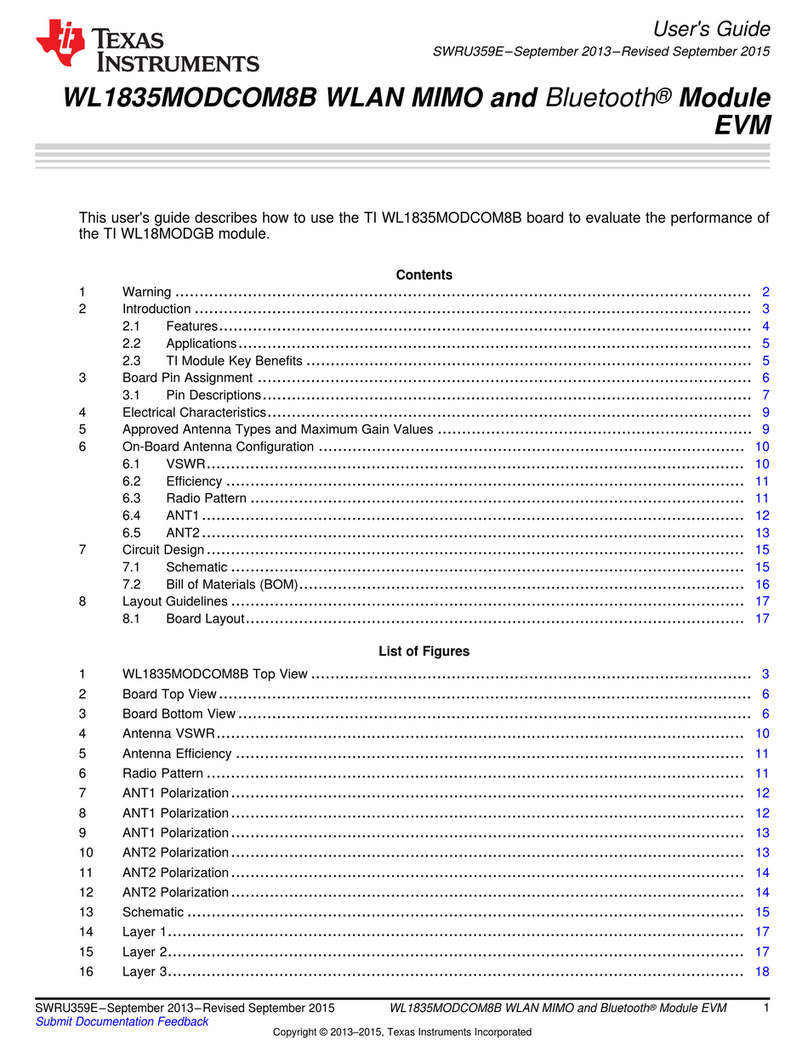
Texas Instruments
Texas Instruments WL1835MODCOM8B user guide
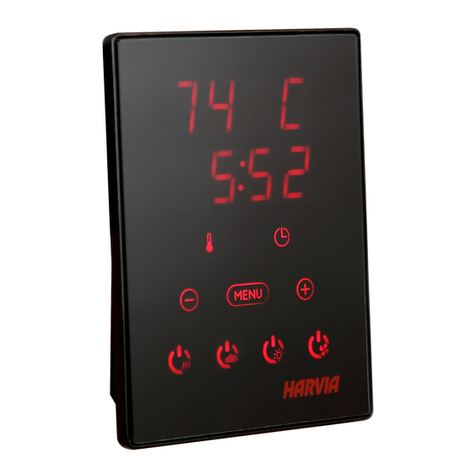
Harvia
Harvia XENIO COMBI Instructions for installation and use
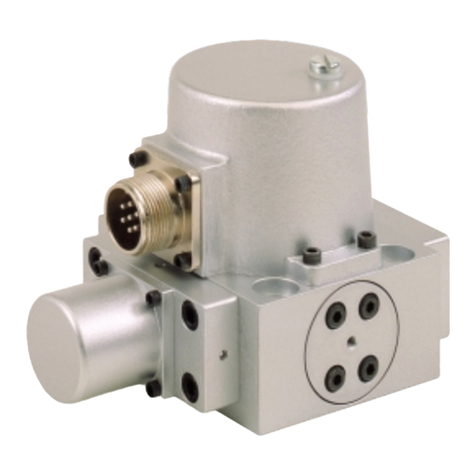
Moog
Moog D765/9 Series user manual
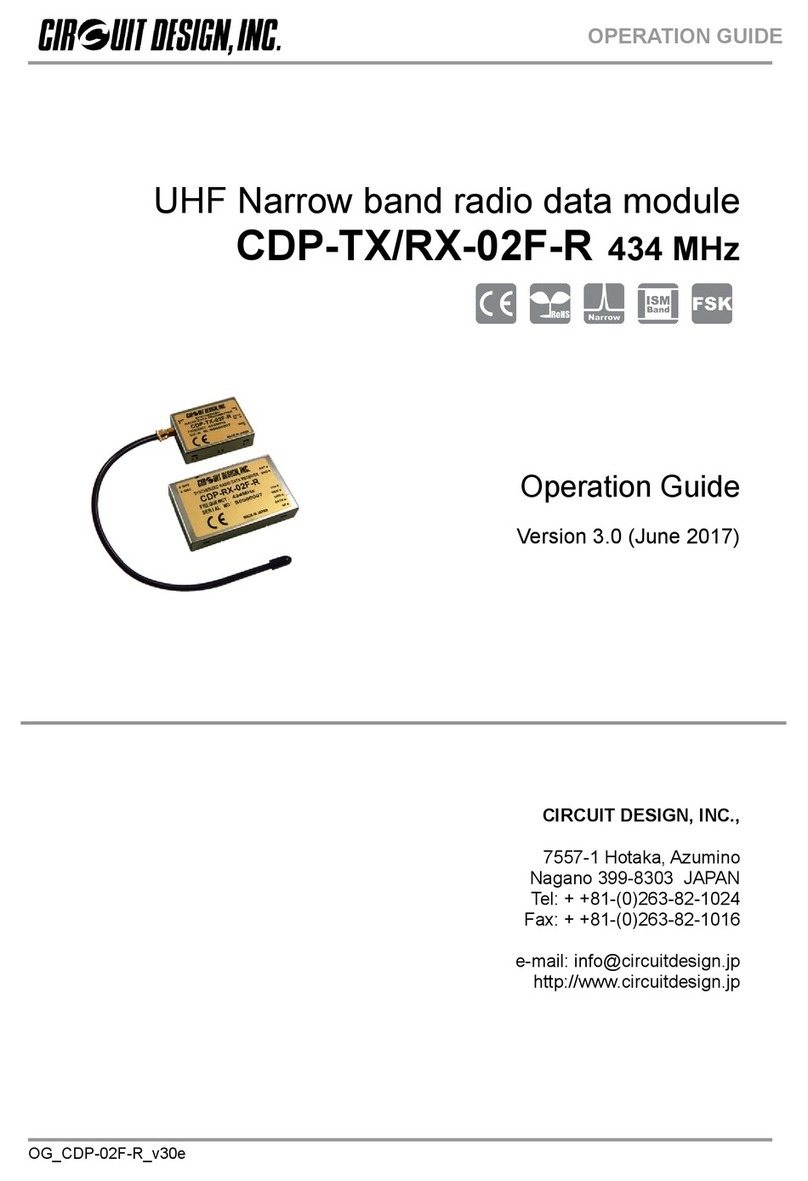
CIRCUIT DESIGN
CIRCUIT DESIGN CDP-TX-02F-R Operation guide
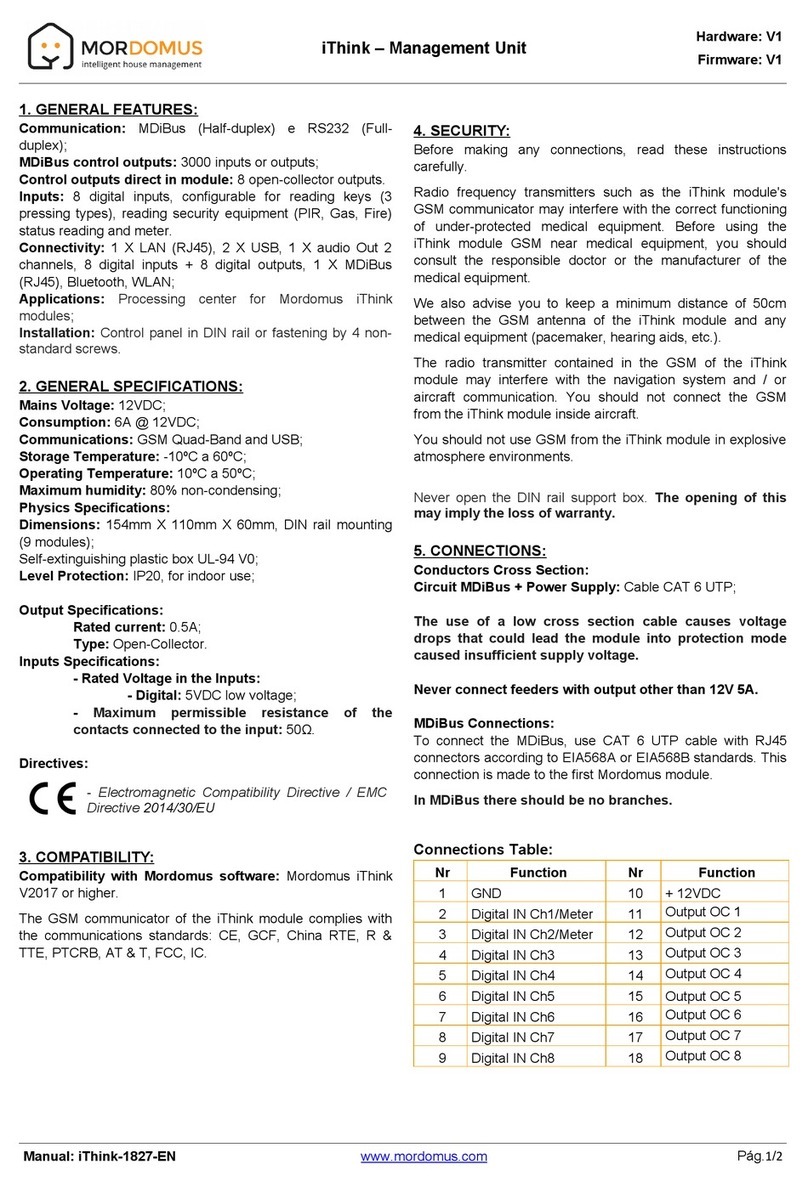
MORDOMUS
MORDOMUS iThink manual
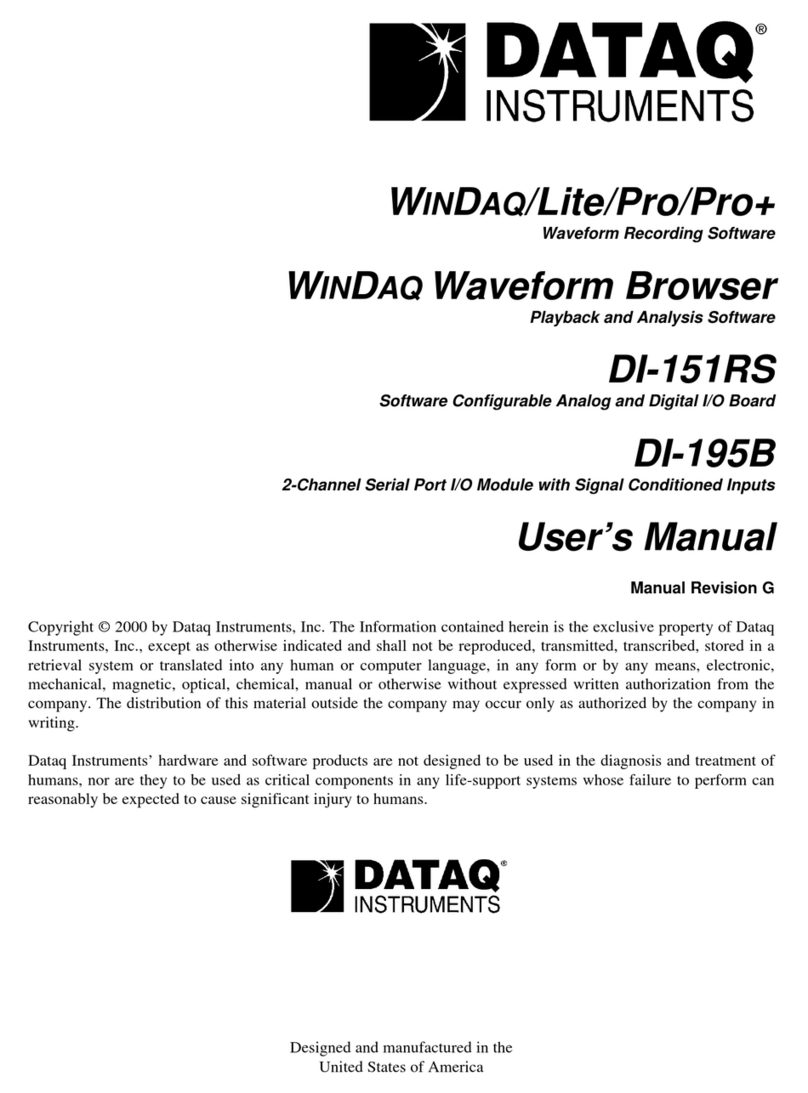
Dataq Instruments
Dataq Instruments DI-151RS DI-195B user manual
